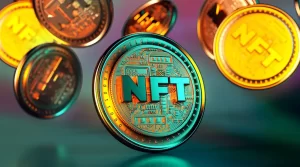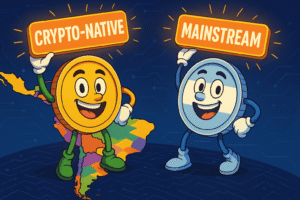Mitigating NFT Market Manipulation: Exploring Potential Solutions and Best Practices

Mitigating NFT Market Manipulation:
The rapid rise of Non-Fungible Tokens (NFTs) has brought immense excitement and opportunities to the digital art and collectibles market. However, along with this surge in popularity, concerns regarding market manipulation have emerged. NFT market manipulation can distort prices, harm investor confidence, and hinder the overall growth and sustainability of the market. In this article, we will delve into the topic of mitigating NFT market manipulation, exploring potential solutions and best practices to ensure a fair and transparent environment for all participants.
Introduction: Understanding NFT Market Manipulation
NFTs are unique digital assets that utilize blockchain technology to establish ownership and provenance. The NFT market has witnessed unprecedented growth, attracting artists, collectors, and investors alike. However, as with any rapidly expanding market, manipulative practices can arise, posing risks to participants and the market’s integrity.
Types of NFT Market Manipulation
Pump and Dump Schemes
Pump and dump schemes involve artificially inflating the price of an NFT through coordinated buying and promoting, only to sell off the asset at its peak, leaving unsuspecting investors with significant losses. This practice relies on hype and false market signals to lure buyers into purchasing overvalued NFTs.
Wash Trading
Wash trading occurs when individuals or entities trade NFTs among themselves, creating a false impression of demand and liquidity. By executing trades with themselves, manipulators aim to boost trading volume and generate a perception of market activity, which can deceive other participants.
Front Running
Front running involves individuals or groups gaining an unfair advantage by executing transactions ahead of others based on non-public information. In the context of NFTs, front running could involve purchasing coveted assets before a public announcement, exploiting insider knowledge for personal gain.
Detecting Market Manipulation
Analyzing Trading Volume and Patterns
Monitoring trading volume and patterns can help identify irregularities that may indicate market manipulation. Sudden spikes in volume, coupled with unusual price movements, may signify manipulative activities. Analytical tools and algorithms can assist in detecting patterns and anomalies that require further investigation.
Monitoring Social Media and Online Communities
Social media and online communities play a significant role in shaping market sentiment. By tracking discussions and monitoring influential voices, market participants can gain insights into potential manipulative practices. Identifying coordinated efforts to promote or denigrate certain NFTs can aid in exposing manipulators.
Regulatory Measures

Increased Oversight and Regulation
As the NFT market continues to mature, regulatory oversight may be necessary to safeguard investors and maintain market integrity. Regulatory bodies can establish frameworks and guidelines that govern NFT marketplaces, deter manipulative behavior, and provide legal recourse for affected participants.
Enhanced Disclosure Requirements
Transparent and accurate information is crucial for making informed investment decisions. Requiring NFT issuers and marketplaces to disclose relevant details about the asset’s origin, creator, and any potential conflicts of interest can enhance market transparency and reduce the likelihood of manipulation.
Technological Innovations
Blockchain Transparency and Immutable Records
Blockchain technology offers inherent transparency and immutability, making it difficult to manipulate records retroactively. By leveraging blockchain’s capabilities, NFT marketplaces can provide verifiable ownership history and transaction records, reducing the potential for fraud and manipulation.
Smart Contract Auditing
Smart contract audits are essential to ensure the integrity and security of NFT marketplaces. Thoroughly reviewing and testing the underlying code can identify vulnerabilities that could be exploited by manipulators. Regular audits by reputable third-party firms enhance user confidence and minimize the risk of manipulation.
Best Practices for NFT Marketplaces
Robust Identity Verification
Implementing stringent identity verification measures can help deter manipulative actors from participating in NFT markets. Requiring users to provide verified identification and information minimizes the risk of fraudulent activities and increases accountability for all participants.
Implementing Anti-Manipulation Policies
NFT marketplaces should establish clear policies that explicitly prohibit manipulative practices. These policies can outline penalties for offenders and provide guidelines on what constitutes manipulative behavior, fostering a fair and trusted trading environment.
Educating Users on Risks and Best Practices
Raising awareness about market manipulation risks and best practices is crucial for safeguarding participants. NFT marketplaces should provide educational resources, tutorials, and guidelines to empower users to make informed decisions and recognize potential manipulation attempts.
The Role of Community and Collaboration
Encouraging Responsible Trading Practices
Community-driven initiatives can play a significant role in deterring market manipulation. Encouraging responsible trading practices, such as sharing due diligence and reporting suspicious activities, helps foster a collective effort to maintain a healthy NFT ecosystem.
Building Trust and Transparency
Transparency and trust are vital for the long-term success of the NFT market. By cultivating open communication channels, actively addressing concerns, and incorporating community feedback, NFT marketplaces can establish a reputation for fairness, integrity, and transparency.
Educational Initiatives to Raise Awareness:
- Developing educational programs and resources to educate NFT market participants about the risks and warning signs of market manipulation.
- Collaborating with industry experts to create informative guides, tutorials, and online courses that cover topics such as identifying manipulation tactics and implementing best practices.
- Organizing webinars, workshops, and conferences to facilitate discussions and knowledge sharing on the topic of NFT market manipulation.
- Encouraging NFT marketplaces to provide educational materials and prominently display warnings about manipulation risks on their platforms.
Enhanced Market Surveillance Technologies:
- Investing in advanced surveillance technologies that leverage artificial intelligence and machine learning to monitor NFT market activities in real-time.
- Implementing robust algorithms and analytical tools that can detect suspicious trading patterns, abnormal volume fluctuations, and other indicators of potential manipulation.
- Collaborating with data analysis firms to develop sophisticated models that can identify emerging manipulation tactics and adapt to evolving market conditions.
- Establishing partnerships with regulatory authorities and financial intelligence units to share data and leverage their expertise in monitoring and investigating market manipulation.
Transparency and Auditability of NFT Marketplaces:
- Requiring NFT marketplaces to maintain transparent records of transactions, including information about the asset, buyer, seller, and transaction history.
- Implementing blockchain-based solutions that provide immutable records and allow users to verify the authenticity and ownership history of NFTs.
- Encouraging regular third-party audits of NFT marketplaces to assess their compliance with anti-manipulation policies and verify the accuracy of reported trading volumes.
- Promoting open communication and transparency between marketplaces and participants to build trust and confidence in the integrity of the marketplace.
Encouraging Responsible Investor Behavior:
- Promoting investor education about risk management strategies, diversification, and conducting thorough due diligence before investing in NFTs.
- Encouraging investors to critically evaluate information and be cautious of market hype, ensuring they make informed decisions based on objective analysis.
- Emphasizing the importance of long-term investment perspectives and avoiding impulsive buying or selling based on short-term market trends.
- Collaborating with industry influencers and thought leaders to advocate for responsible investing practices and discourage speculative behaviors that can contribute to market manipulation.
Strengthening Legal and Regulatory Frameworks:
- Working with policymakers and regulatory authorities to establish clear guidelines and regulations specifically addressing NFT market manipulation.
- Advocating for increased regulatory oversight and enforcement to deter manipulative activities and ensure market fairness.
- Encouraging the development of international standards and harmonization of regulations to address the global nature of the NFT market.
- Collaborating with legal experts to propose amendments or new legislation that specifically addresses the challenges and risks associated with NFT market manipulation.
NFT Market Manipulation Prevention Tools:
In the quest to mitigate NFT market manipulation, various tools and technologies have emerged to enhance detection and prevention capabilities. Transaction monitoring tools have gained prominence, employing sophisticated algorithms to track and analyze NFT transactions in real-time. These tools scan the blockchain for suspicious trading patterns, abnormal volume spikes, and other indicators of potential manipulation. By leveraging advanced data analytics and machine learning techniques, these tools can identify irregularities and issue alerts, enabling market participants to take proactive measures.
Furthermore, the development of intelligent algorithms has significantly contributed to the fight against market manipulation. These algorithms are trained to detect subtle patterns and anomalies in trading behavior, thereby identifying potential manipulation attempts that might go unnoticed by human observers. By continuously analyzing vast amounts of historical and real-time data, these algorithms can identify market conditions conducive to manipulation and help authorities and market participants remain vigilant.
Collaborative Efforts Among NFT Marketplaces:
Addressing the challenges posed by NFT market manipulation necessitates collective action and collaboration among NFT marketplaces. Industry alliances and working groups have emerged to foster cooperation and knowledge exchange in combating manipulation. These collaborative efforts aim to establish a unified approach to detect and prevent manipulation across different platforms.
One example of such collaboration is the sharing of information and best practices. By exchanging insights on emerging manipulation tactics, marketplaces can enhance their understanding of evolving threats and develop effective countermeasures. Collaborative platforms and forums enable stakeholders to discuss suspicious activities, share indicators of potential manipulation, and collectively work towards a fair and transparent NFT market.
Moreover, the establishment of standardized guidelines and protocols can contribute to a consistent and coordinated response to manipulation attempts. These guidelines may include recommendations on transaction monitoring, user authentication, and reporting mechanisms. By adhering to common standards, NFT marketplaces can present a united front against manipulation, demonstrating their commitment to maintaining market integrity and protecting participants’ interests.
Escrow Services and Trusted Third Parties:
Escrow services and trusted third-party intermediaries play a crucial role in mitigating the risks associated with NFT market manipulation. These entities act as neutral parties that facilitate secure transactions and provide additional layers of verification and protection.
In the context of NFTs, escrow services play a vital role in verifying the authenticity and ownership of digital assets. They act as intermediaries between buyers and sellers, holding the NFT in escrow until the transaction is successfully completed. Through rigorous verification processes, escrow services ensure that the NFT being traded aligns with its claimed provenance and ownership history, minimizing the risk of fraudulent or manipulated assets entering the market.
Conclusion
Mitigating NFT market manipulation requires a multifaceted approach involving technological advancements, regulatory measures, and community collaboration. By leveraging blockchain transparency, implementing anti-manipulation policies, and educating users, NFT marketplaces can create an environment that safeguards participants’ interests and promotes fair and sustainable trading practices.

I have been in the industry for over 5 years. I know all the latest news and what is going on with different coins. I write about Bitcoin, Ethereum, Litecoin, and more.








